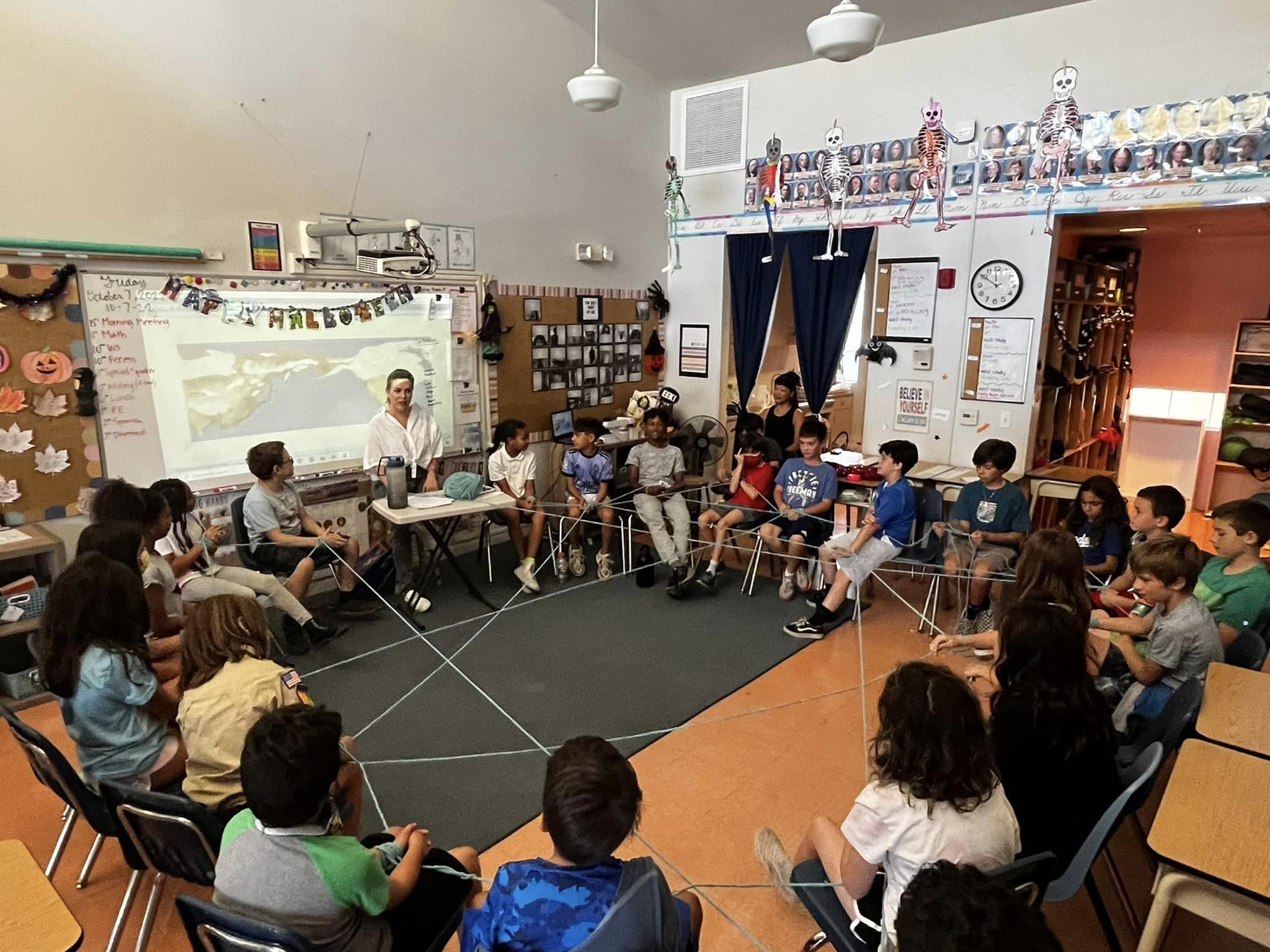Finding Your Roots Project
A really exciting project that is part of the elementary curriculum is the fourth and fifth-grade Immigration unit. This unit follows our school's project-based learning (PBL) approach and weaves throughout the whole year with hands-on experiences and discovery.
The unit starts by asking students, “What is Immigration?” We work with our students to create a KWL chart to capture what they already know about immigration, and what they wonder, have heard, or want to know about immigration. Here are a few examples of what our students shared:
“Immigration is when someone comes from a different country and goes to another to live.”
“It is where people move from a different country to escape war or natural disasters.”
“I know that immigrating is when you flee from another country because of war or natural disasters and find a home there.”
A few things students wanted to know:
“Why do they move? Is it just because of war or disasters?”
“How do you immigrate?”
“I want to know what are the main countries that do this.”
The class discussion evolved into an essential question: “Why do people immigrate to America?”
SPECIAL GUEST SPEAKER
To help answer this question, a special guest speaker who is a social justice advocate came in to talk with our students. We came together in a sharing circle and had a rather profound and engaging conversation. Some of the topics discussed included: issues involving border lines—the border—Deferred Action for Childhood Arrivals (DACA), current government policies, and even some discussion about the different countries our families came from. To illustrate the connections among these topics, we took part in a web share, eventually creating an actual web.
Some of our students wondered: “What can we as Americans do to help immigrants feel comfortable when entering our country?” As students shared around the circle, answers like this could be heard:
“We can create food baskets so people have their first American meal.”
“Maybe we can give people money so they have something to start with.”
“We can set people up with jobs so they don’t have to look for one.”
“Maybe families would want to host immigrants so they have a place to stay and feel comfortable.”
ELLIS ISLAND & IMMIGRATION
In the next phase of the project, we discussed why people historically wanted to travel to America through push and pull factors such as religion, unfair treatment, and economic resources. Our students were especially interested in learning about the first, second, and third class systems. We studied articles and photographs about the journey to America and learned about the immigration station on Ellis Island. They were fascinated with the process involved in traveling through Ellis Island, and many students were surprised to learn about the health and legal inspections that the third-class passengers had to go through.
FAMILY HISTORY PROJECT
In the current phase of this project, students are researching their own family’s immigration story. They interviewed family members to find out as much as they could about their family's history and gathered pictures to help bring the stories to life. As part of a cross-curricular approach, the Tech teacher is working with our students on creating family trees using GoogleDraw. Everyone is looking forward to presenting their family histories to the class!
Everything our students have discovered so far will connect to other topics we will learn about, such as the Gold Rush, Chinese Exclusion, Japanese Internment, colonization, and the American concept of manifest destiny. Students will also draw on this knowledge when learning about the history of minority and sometimes marginalized people and as part of our Miry's List project through PAWS. In the spring, they will be creating a living museum as their final project. We can’t wait to share the final project and all this wonderful learning with the school community.



